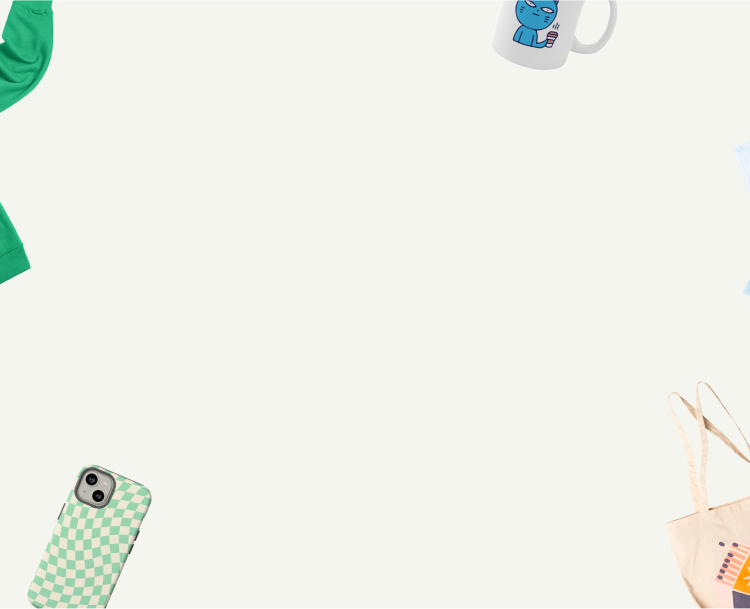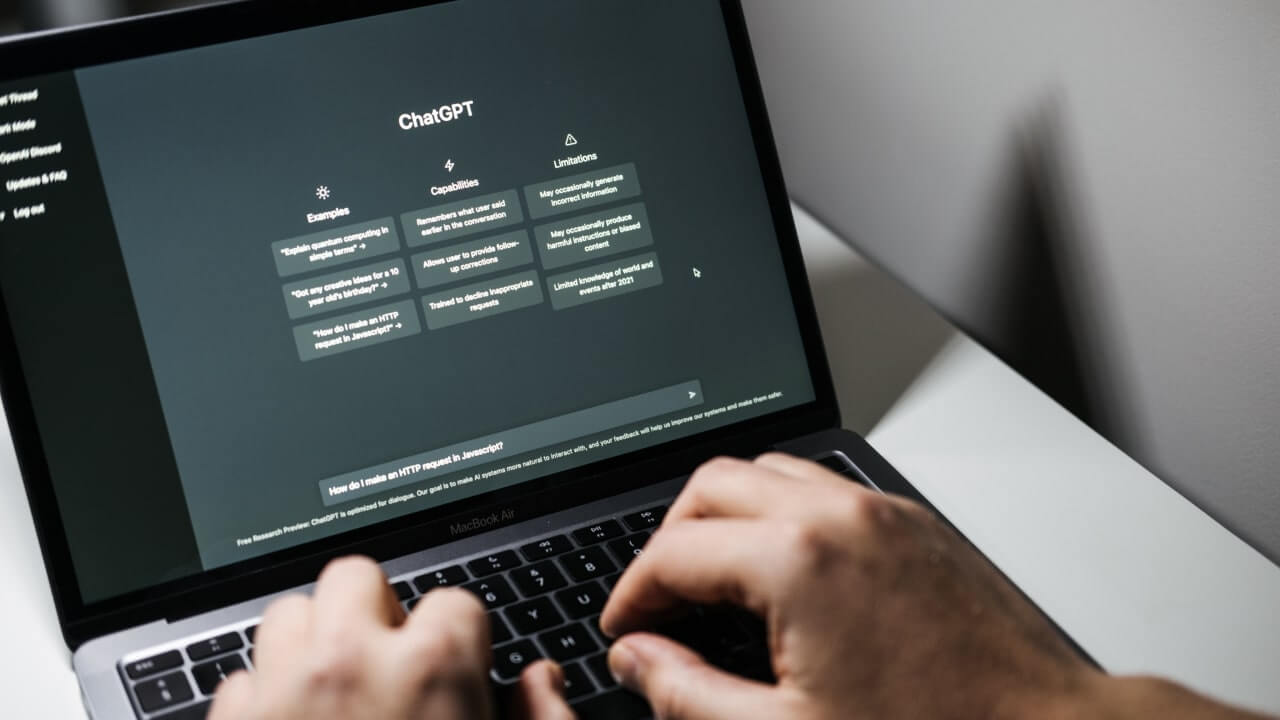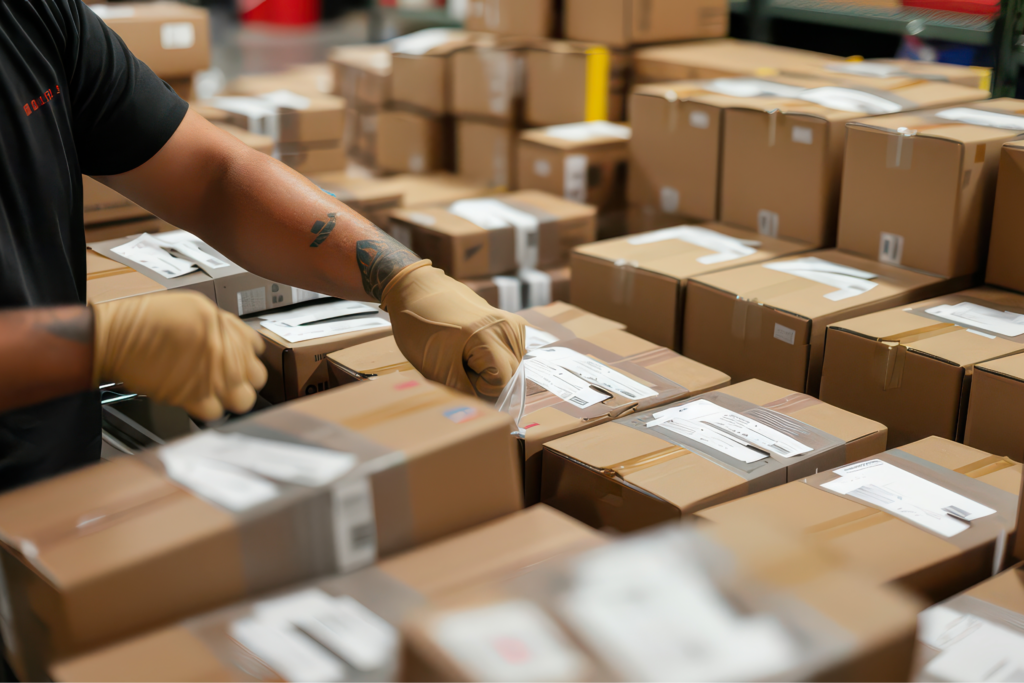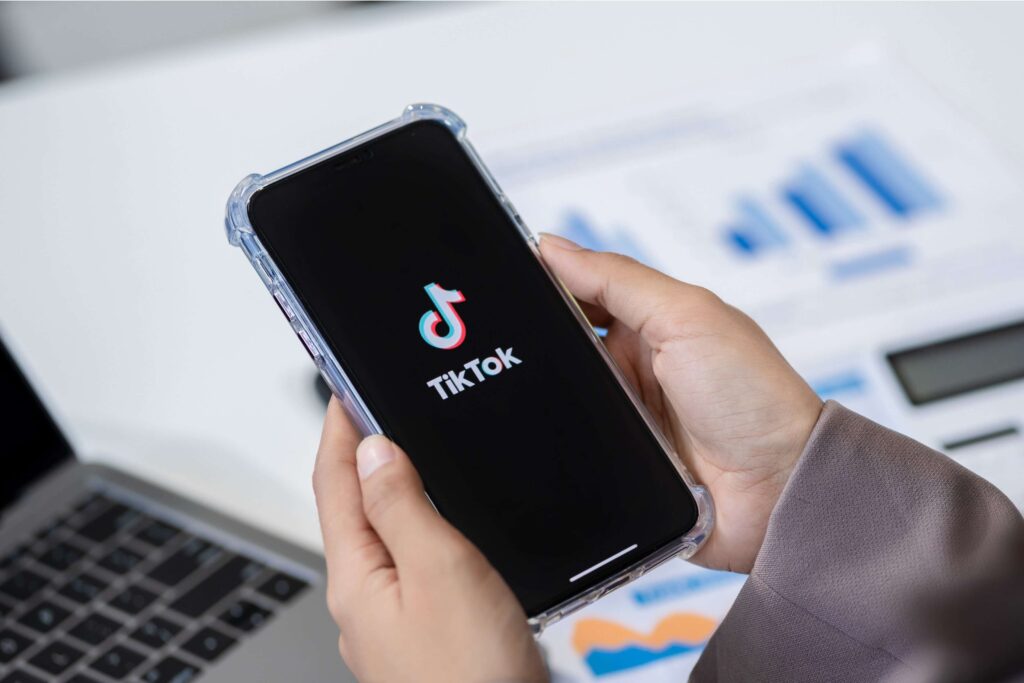Create what’s trending. Sell what’s hot
In eCommerce, staying creative while saving time is everything. Whether you’re writing product descriptions, creating visuals, or planning social media posts, ChatGPT can help.
Let’s explore how to write effective ChatGPT prompts and how to use them for product creation, customer service, digital marketing, and more.
We’ll share practical prompt templates and show you how AI tools can increase your productivity, support your creativity, and generate quality content.
Key takeaways
- ChatGPT prompts streamline your workflow by turning ideas into usable content, from product descriptions to emails.
- Artificial intelligence tools are accessible to anyone, helping boost productivity, improve customer satisfaction, and simplify tasks in everyday life.
- Clear, goal-driven prompts help you write product descriptions, generate blog posts, and create marketing campaigns easily.
- Focusing on a few key points in prompt writing – like tone, format, and audience – improves your ChatGPT responses.
- ChatGPT enhances, not replaces, human creativity. Use it to explore ideas, write high-converting copy, and strategize ways to grow your brand.
What are ChatGPT prompts?

ChatGPT prompts are short instructions or questions that tell the AI what to do. It could be a direct request, like “Summarize the latest eco fashion trends,” or a more abstract one, like “Describe the vibe of a brand that feels like a cozy Sunday morning.”
Prompts can guide the AI to generate nearly anything – product pages, step-by-step instructions, blog posts, poems, translations, quizzes, or email campaigns. It can even explain a complex topic like quantum computing in simple terms.
A well-structured sample prompt makes a big difference in output quality.
ChatGPT uses natural language processing and large language models to understand context and produce human-sounding answers. And while it’s powerful, it’s also extremely accessible. All you need is a clear idea, a little creativity – and a good prompt.
If you’re in Print on Demand (POD), you can ask the AI to offer product ideas, write SEO-friendly content, brainstorm social media posts, suggest ways to engage customers, and much more.
How to write prompts for ChatGPT?
Writing a good prompt isn’t about sounding smart – it’s about being clear. The better you know what you want, the easier it is for ChatGPT to help you.
Think about your goal. Are you writing content? Seeking guidance? Exploring a concept? Build your prompt around that purpose. Add details like tone, audience, format, or even emotional cues. That extra context gives the AI something to work with.
Instead of:
“Write a product description for a backpack.”
Try:
“Write a product description for a backpack designed for college students and remote workers. Emphasize durability, comfort, and eco-friendly features.”
It also helps to add formatting instructions if applicable, whether you want it in paragraphs, bullet points, a table, or even a full lesson plan. And if your brand has a distinct tone – playful, professional, bold, casual – include that too.
If this is your first time working with AI, start broad and narrow it down. Refine your ChatGPT responses by giving feedback or rewording your prompt for clarity.
Let’s say you’re writing a blog post. Begin by generating title ideas. From there, ask for an outline. Once you like the structure, dive into writing one section at a time. You can then ask the AI to proofread or find mistakes in your draft before publishing.
Here’s an example of a well-structured prompt:
“Write a 5-paragraph blog post for young adults about starting a print-on-demand business from home. Keep it casual, motivational, and include a few common mistakes to avoid.”
With prompts like this, you’re not just typing in commands – you’re building a collaboration that leads to better, more targeted content.

Want to learn the basics of using AI more effectively? Check out our step-by-step guide to using ChatGPT for more prompt-writing tips and real-world use cases.
15 Best ChatGPT prompts to help your POD workflow
There’s no shortage of ways to use ChatGPT in your print-on-demand workflow – from marketing and content creation to product descriptions and research. Below, we’ll walk through some everyday scenarios where prompts can give you a serious productivity boost.
Social media posts that actually connect
Social media isn’t just about driving traffic, but also engaging with your audience. ChatGPT can help you brainstorm content that feels genuine, not just promotional.
Let’s say you’re launching a new hoodie design inspired by vintage movie posters. You might ask:
“Create a 5-day TikTok content plan to promote a hoodie inspired by 1950s sci-fi films. Include themes, hashtags, audio ideas, and a visual for each day.”

Or if you want to lean into lifestyle:
“Write 3 Instagram captions that connect sustainable fashion to slow living, travel, and creativity.”
And if something goes wrong with a customer order:
“Write a polite, on-brand reply to a customer asking why their kangaroo-print tote bag hasn’t arrived yet.”
Use these prompts to do more than just sell – build a brand people remember and want to come back to.
Blog content that ranks
Whether you’re writing about your niche or your passions, ChatGPT can help you shape ideas into reader-friendly posts that perform well on search engines.
For example:
“List 10 blog post ideas that connect jazz music to modern graphic design.”
Or:
“Write an intro for a blog post on why independent creators should visit Kyoto in the fall.”
Want to go deeper?
“Generate five thought-provoking questions about how AI tools are changing the way illustrators work today.”

These prompts can help you create content that ranks and resonates, whether your target audience is streetwear fans or productivity enthusiasts. Adding personal anecdotes to your posts can also help build an emotional connection.
Descriptions that sell without sounding generic
Writing product descriptions can be draining, especially when you’ve got dozens of items. They can make or break a sale, but your descriptions shouldn’t sound like they came from the same copy-paste template.
ChatGPT helps you write faster without sacrificing personality.
Try something like:
“Write a friendly product description for a t-shirt featuring a hand-drawn alligator surfing a wave. Mention fabric quality and styling tips.”
Or go artsy:
“Describe a ceramic mug featuring abstract shapes inspired by Bauhaus designs. Keep the tone minimal and design-focused.”
Or a little nostalgic:
“Write a product description for a hoodie that looks like it came out of a 1980s arcade.”
Prefer something more conventional? Highlight key features like this:
“Insert text that highlights unique selling points for a ceramic mug: microwave-safe, made in the USA, dishwasher-friendly.”
Let ChatGPT help you speed up the process without losing that personal touch.
Emails that convert without sounding like spam
If email campaigns are part of your digital marketing plan, ChatGPT can save you hours of writing – whether you’re launching a new collection, crafting newsletters, sharing a blog post, or asking for reviews.
The right prompt will do the heavy lifting. Instead of a generic email template, try something like:
“Write a product launch email for our new Lunar Platypus print series. Make it fun and slightly nerdy. Also, generate a design for it.”

Or:
“Draft an email asking for customer reviews on our recycled cotton tote bags. Keep it genuine and conversational.”
Sometimes you need to nudge shoppers to complete their orders:
“Generate a friendly follow-up email for abandoned carts with a 15% discount offer.”
You can also personalize for better results:
“Create a follow-up email to a customer who favorited a dessert-themed apron but didn’t purchase. Mention similar products or suggest creative ways to use them.”
When your emails feel personal, purposeful, and focus on delivering key messages clearly, people are more likely to engage.
And yes, you should always ask ChatGPT to draft multiple versions so you can A/B test and see what performs best.
Market research made simple
Staying ahead means understanding your audience, trends, customer behaviour, and what’s selling. ChatGPT helps you turn research into clear takeaways.
For example:
“Summarize 2025 design trends in minimalist home decor for digital artists and print sellers. Mention how sustainability influences product materials or packaging.”
Or:
“Compare sales trends between dinosaur-themed t-shirts and abstract pattern hoodies across various platforms (search the internet for real data, don’t make simulations). After that, draw a graphic of it.”

Curious about a niche?
“Give a market overview of print-on-demand stores focused on pets, especially exotic ones like iguanas and sugar gliders.”
Get a snapshot of your competitors:
“Do a quick competitor analysis of stores on Etsy selling retro-style t-shirts. Also, check Bing for the latest info.”
These insights can help shape your product line and sharpen your marketing efforts across different industries. It’s especially useful when you’re looking for hidden gems to stand out in saturated markets.
Help with code and web development
Need to improve your website or online store but aren’t fluent in code? ChatGPT can help you build, fix, or customize with zero stress.
Need a product grid?
“Generate HTML and CSS for a product page showcasing art prints in a Pinterest-style grid. It must look good on mobile.”

Trying something experimental or multidisciplinary?
“Generate code to create a MIDI file from a piano loop for Arduino.”
Want to track your product performance?
“Create a script to log every time someone adds a tote bag to their cart on my Shopify store.”
Or something unexpected:
“Write code for a quiz that matches customers with their ideal travel mug based on their favorite music genre.”
Whether you’re building a store or a mobile application, it’s like having a developer on call – without the hourly rate.
Get creative (because AI can have fun, too)
Sometimes, the best prompts have nothing to do with conversion rates or sales. They’re just a playground for your imagination – and that’s good for business too.
ChatGPT is great for creative exploration. Use it to unlock new ideas, test concepts, or just take a break and play.
Want fun prompts for ChatGPT? Here’s an example:
“Write a short story about a raccoon who accidentally invents time travel and invents POD in the 1800s. Provide also some illustrations for the story in a mid-1800s caricature style, black-and-white.”

Or:
“Describe a surreal landscape that could be turned into a poster: mix bioluminescent trees, old jazz clubs, and floating capybaras. Generate also a PNG.”

For entrepreneurs and artists looking for their next bestseller:
“Suggest five print ideas that blend pet portraits with iconic science fiction movie title scenes. Avoid copyright infringement.”
Stay on the safe side when creating fan-style designs. Make sure your prints are original and avoid copyright infringement. Use tools like Google’s Reverse Image Search or TinEye to check for existing artwork.
Musicians? You can even say:
“Write a sad melody in an A minor pentatonic scale. Modify the following chord progression to make it sorrowful: Am -Dm – G – Am. Add elements of Scandinavian folk songs. Please generate the sheet music in standard notation, as a PDF or PNG file.”

Creativity is an advantage. A quirky product idea, a bold design, or a story that makes people smile can set your brand apart. It’s what turns casual browsers into loyal fans.
Curious how AI generates stunning visuals? Dive deeper into the process with our breakdown of how AI art works.
Why POD sellers should use ChatGPT
Running a print-on-demand business means you’re probably wearing multiple hats – marketer, designer, customer service rep, and more. ChatGPT won’t replace your role, but it helps streamline the work.
- Need content? Type commands to generate blog posts, product pages, and newsletters that match your brand voice – so you can draft and publish in minutes, not hours.
- Trying to stay active on social media? Use prompts to make captions, spot trends, and respond to reviews.
- Customer support? ChatGPT can instantly generate answers to common questions about shipping, returns, or sizing, improving the customer experience with consistent, fast replies.
If you enjoy prompt engineering, ChatGPT gives you full control. With a bit of iteration, you can shape outputs – from a snappy CTA to a full content outline – to fit your goals.

Looking for more ways to improve your online store with AI? Read our step-by-step guide – AI solutions for eCommerce – to explore tools for marketing, customer service, and sales performance.
Bonus: Prompt generator tip
Did you know you can use ChatGPT to create your own prompt generator?
Here’s an example:
“Create a prompt generator for print-on-demand product ideas. It should ask me about my target audience, product type, seasonal theme, and trending aesthetic – then return five niche product concepts using an example database.”
Unlike a one-off prompt, a custom prompt generator helps you streamline brainstorming. Instead of retyping the same request over and over, it guides you with questions and delivers fresh, tailored ideas every time.
ChatGPT versions: What you can (and can’t) do
As of 2025, ChatGPT’s most advanced model is GPT-4o (“omni”), available on paid plans. It’s faster, more accurate, and supports text, image, and voice input in the same conversation. You can upload a photo, speak to it, or paste a spreadsheet – and get a cohesive response.
GPT-4o can also browse the web (via Bing) and access your chat history and files if you’re on the Pro or Plus plan. It has memory (Pro only), which uses machine learning to recognize patterns and tailor replies over time, which is helpful for small business workflows.
Its built-in knowledge runs up to October 2023, but browsing lets it pull live data, perfect for trend research or current events.
Free users get GPT-3.5, which works well for writing and brainstorming but lacks browsing, memory, and multimedia support. Its knowledge stops at January 2022, so it needs extra context for recent info.
No matter which version you use, always fact-check time-sensitive details like prices or trends. These AI models can help, but they’re not always current.
Here’s a quick breakdown of the current ChatGPT plans:
| Plan | Monthly cost | Model access | Key features |
|---|---|---|---|
| Free | $0 | GPT-3.5 | Text-only chat, no browsing, no file or image upload, limited usage |
| Plus | $20 | GPT-4o (standard) | Faster responses, image and voice input, file upload, web browsing |
| Pro | $200 | GPT-4o (enhanced) | Longer context, Deep Research (250 queries/month), advanced memory |
Plans may vary slightly by region and don’t include API access.
Start your journey with ChatGPT and Printify
ChatGPT won’t replace your creativity, but it can speed up processes and help you scale. The prompts we’ve listed are just the beginning. With tools like Printify, you can turn AI-generated content into real products that people love.
Ready to launch or level up your POD store?
Start for free with Printify and bring your best ChatGPT prompts to life.
FAQ
Good ChatGPT prompts are clear, specific, and goal-oriented. For example, instead of saying “Write a blog,” try “Write a 5-paragraph blog post for young adults about starting a print-on-demand t-shirt business in 2025.”
Other great prompt ideas include:
- “Create Instagram captions to promote eco-friendly apparel.”
- “List blog post ideas for a cat-themed POD store.”
- “Write product descriptions for mugs that highlight unique selling points.”
The best prompts give ChatGPT enough context to generate useful, tailored content. You can even use it to generate mindfulness exercises or calming prompts that help you reset and spark fresh ideas.
Find ChatGPT prompts examples in blogs (like this one), prompt libraries, Reddit threads where users submit ideas, and even directly from ChatGPT by asking for suggestions.
There are also free and paid prompt generator tools designed for specific tasks like content creation, coding, or marketing.
For print-on-demand sellers, many platforms now include prompt templates to streamline tasks like writing product descriptions or running ad campaigns.
The perfect prompt starts with a clear objective. Include relevant context – like tone, format, target audience, and desired length – and make your request specific.
For example, “Write a 150-word follow-up email for a customer who abandoned their cart, including a 10% discount and a friendly tone.”
Perfecting a prompt often takes a few iterations, so don’t be afraid to refine it or ask ChatGPT to revise the output based on your feedback.
Final thoughts: Use ChatGPT prompts to grow your business
ChatGPT makes it easier to create content, engage customers, and stay consistent – all without burning hours on repetitive tasks. With the right prompts, you can turn ideas into action and streamline processes for your print-on-demand store.
Whether you’re writing emails, planning posts, exploring career development ideas, or doing quick market research, ChatGPT is a smart tool for any small business owner or entrepreneur with a growth mindset. And with GPT-4o’s new features, it’s more powerful than ever.
Turn your prompts into products in no time.
Start selling with ChatGPT and Printify












